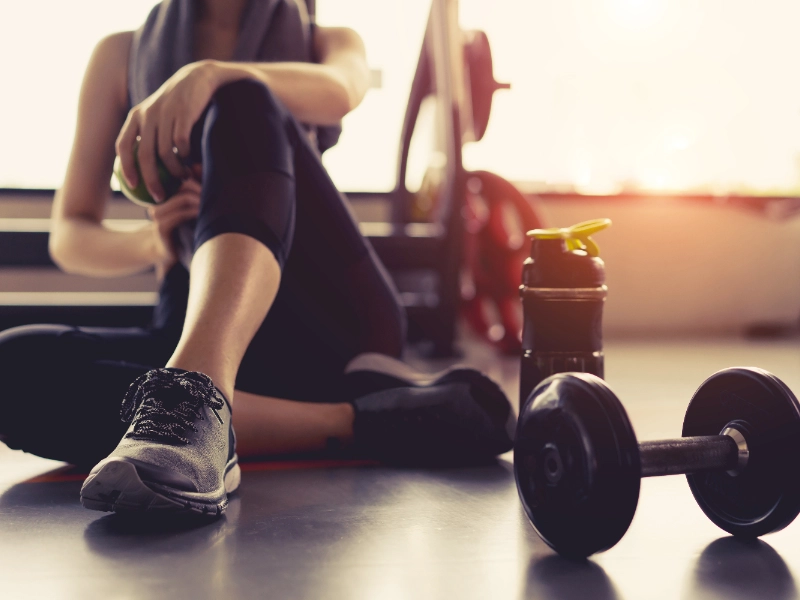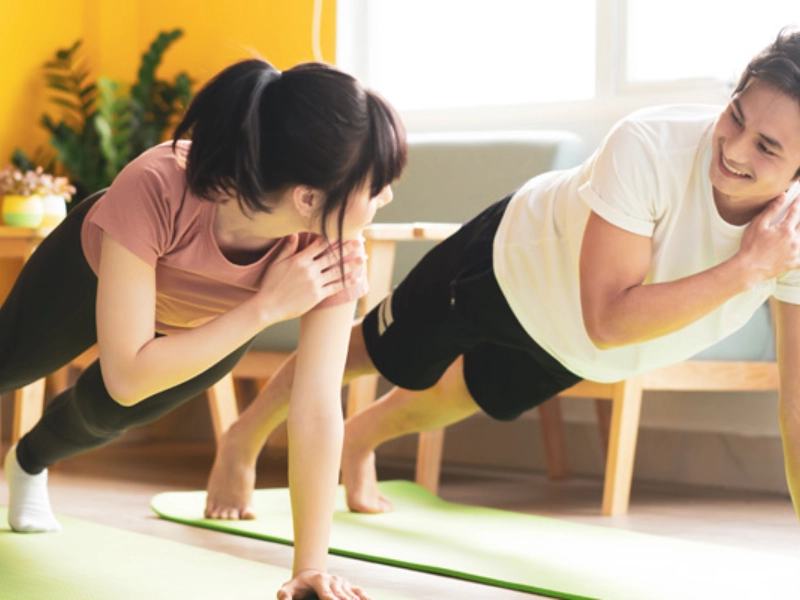Push-ups, pull-ups, lunges, squats, and other bodyweight exercises are great total-body activities that can be modified to suit any fitness level. When done correctly, these exercises test the coordination of your arms, core, and lower body (legs, glutes). Compound movements that target many joints and work several muscle groups at once are the case in many bodyweight exercises. They can be very successful when it comes to building mass.

 Exercises must be performed correctly to maximize the benefits of training. The way you perform an exercise and your body position are both components of proper form. Every exercise has an ideal form that will help you train specific muscles, prevent injury, and lift more weight during repetitions. Some
athletes find it difficult to practice proper form, especially when moving heavy loads, because they tend to move faster. However, it is important that the goal of the exercise is to train every muscle to voluntary fatigue. Overtraining can result from trying to overcome muscular insufficiency with improper form, which can potentially cause harm in certain situations.
Exercises must be performed correctly to maximize the benefits of training. The way you perform an exercise and your body position are both components of proper form. Every exercise has an ideal form that will help you train specific muscles, prevent injury, and lift more weight during repetitions. Some
athletes find it difficult to practice proper form, especially when moving heavy loads, because they tend to move faster. However, it is important that the goal of the exercise is to train every muscle to voluntary fatigue. Overtraining can result from trying to overcome muscular insufficiency with improper form, which can potentially cause harm in certain situations.
 Many people believe that going to the gym and weight training is the only way to build muscle mass. However, bodyweight training is just as productive. It can be performed anywhere and is, in fact, more convenient.
Calisthenics is a popular type of bodyweight exercise that includes exercises that focus on large muscle areas such as the triceps, shoulders, and legs. You need to utilize your own body to perform exercises such as push-ups, lunges, planks, and squats. It is often used in gymnastics and martial arts training, but it can also be utilized to develop strength and flexibility for everyday activities. When it
comes to bodyweight training to build muscle, trainers should emphasize proper form and increasing the load. Every muscle group should be trained twice a week with rest periods in between. To promote muscle growth, the body needs to be provided with proper nutrition, especially protein. If results are not seen, trainers can consider increasing the load or modifying the training to make it harder.
Many people believe that going to the gym and weight training is the only way to build muscle mass. However, bodyweight training is just as productive. It can be performed anywhere and is, in fact, more convenient.
Calisthenics is a popular type of bodyweight exercise that includes exercises that focus on large muscle areas such as the triceps, shoulders, and legs. You need to utilize your own body to perform exercises such as push-ups, lunges, planks, and squats. It is often used in gymnastics and martial arts training, but it can also be utilized to develop strength and flexibility for everyday activities. When it
comes to bodyweight training to build muscle, trainers should emphasize proper form and increasing the load. Every muscle group should be trained twice a week with rest periods in between. To promote muscle growth, the body needs to be provided with proper nutrition, especially protein. If results are not seen, trainers can consider increasing the load or modifying the training to make it harder.
 Bodyweight training, in addition to being adaptable and affordable, produces significant strength and muscle growth. The fact that bodyweight exercises such as squats, push-ups, and pull-ups are as effective, or even more so, than standard weightlifting, surprises many.
Bodyweight exercises are natural, functional movements that train muscles in a similar way to everyday activities. In addition, they are less taxing on the joints than hard weightlifting, and they help increase your client's range of motion, helping to avoid accidents.
Get the most out of your bodyweight training sessions by testing your muscles with different versions of the exercises. For example, you can use mechanical drop sets, train to failure, or vary the number of repetitions within a set. In addition, you can group exercises to work many muscle groups at the same time. To work your whole body, try performing single-arm dips, squats and walking lunges, and box jumps all on the same day.
Bodyweight training, in addition to being adaptable and affordable, produces significant strength and muscle growth. The fact that bodyweight exercises such as squats, push-ups, and pull-ups are as effective, or even more so, than standard weightlifting, surprises many.
Bodyweight exercises are natural, functional movements that train muscles in a similar way to everyday activities. In addition, they are less taxing on the joints than hard weightlifting, and they help increase your client's range of motion, helping to avoid accidents.
Get the most out of your bodyweight training sessions by testing your muscles with different versions of the exercises. For example, you can use mechanical drop sets, train to failure, or vary the number of repetitions within a set. In addition, you can group exercises to work many muscle groups at the same time. To work your whole body, try performing single-arm dips, squats and walking lunges, and box jumps all on the same day.